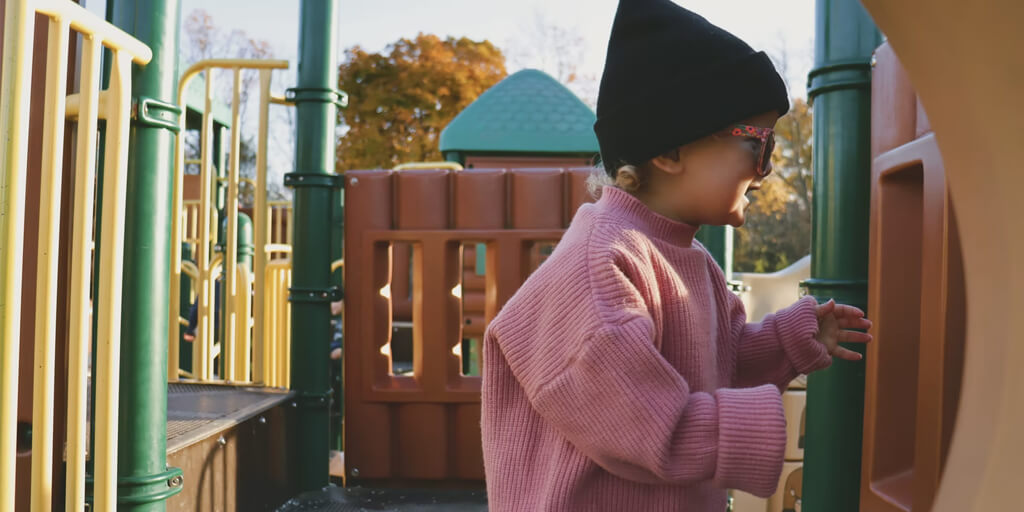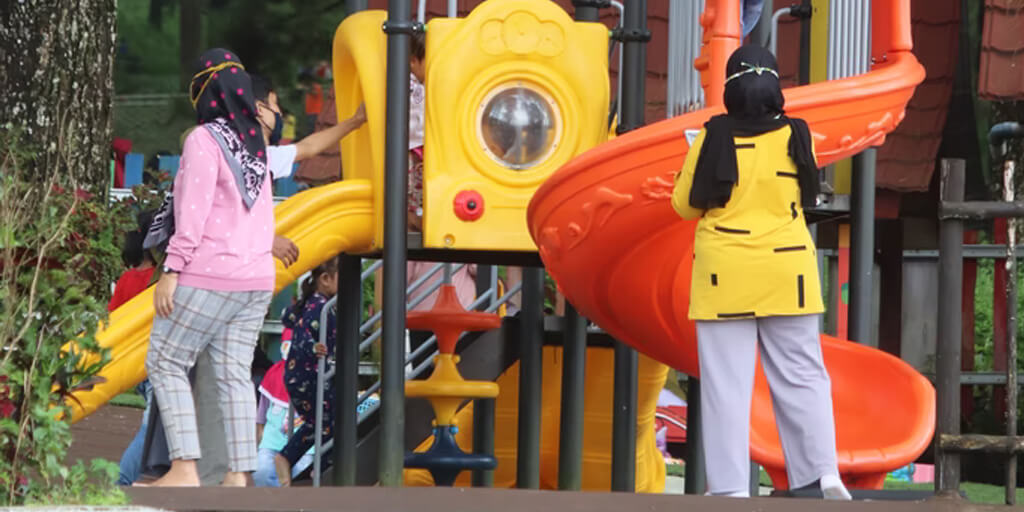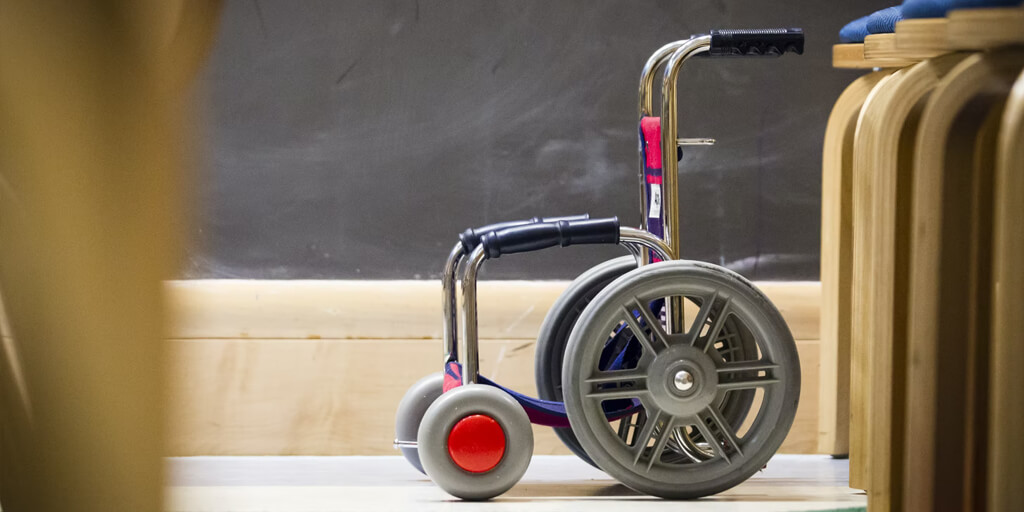Five Ways To Make Your Childrens Play Area More Inclusive
Here at PlaySmart, we want to make products that work for every child and provide equal play opportunities for every level of ability. All too often, consumers in the play industry find that children’s play areas are inaccessible, or not built for wheelchairs, crutches and so on. As a business, we strive towards inclusive children’s play areas with our safety surfaces. This is part of our goal to ensure all kids can have the same access to play.
Are you wondering about ways to make your play area more inclusive? Or are you looking for ideas of what an inclusive play area should include? Look no further! PlaySmart have compiled a guide to the top five things that make a play area inclusive…
1: Wheelchair-Accessible Surfaces
An inclusive playground should cater to everybody regardless of whether they walk or use a wheelchair. Some surfaces are more suitable than others for the wheels of a wheelchair. When picking or designing a playground, you need to take this factor into account.
Bonded rubber mulch is a great surface in all aspects. Cushioning, colourful, slip-resistant and sustainable, with a lower price tag than other competitors, the benefits speak for themselves when it comes to rubber mulch.
PlaySmart’s own offering, JungleMulch, uses shredded rubber tyres, dyed with our own unique colouring process to ensure long-lasting vibrant colours. It has excellent slip resistance and is suitable for range of depths to offer the best fall protection levels. The smooth surface of JungleMulch is very accommodating to wheelchair users and is one of the most accessible surfaces on the market.

2: Opportunity for Quietness
Another thing to consider when it comes to creating an inclusive playground is the sensory stimulation it can offer. Children may have a range of sensory issues or sensitive. This can stem from autism, disabilities, mental health and so on. The playground can be a good source of recreation and stimulation. Trying to cater to sensory issues without being overwhelming can appear complex or overwhelming. However, it is important to understand the difference between good and bad stimuli.
Put simply, children with sensory sensitivity can sometimes experience sensory overload. This is where the five senses take in more information than the brain can process. It can cause the body to feel like it has entered a crisis mode. This may be more common in children with ASD, who can become overwhelmed by too much sensory stimulation. However, children still need a certain amount of sensory stimulation in order to encourage creative play and interaction with other children. So how is this addressed?
Special educational professionals often recommend that children’s play areas include a mix of interactive stimuli alongside quiet areas. This allows for a space children can retreat to for peace and quiet if they feel too overwhelmed. You could include sheds, huts or structures with crawl spaces. These can become spaces where children can retreat to in order to calm themselves in a quiet environment. Providing the opportunity for retreat helps avoid sensory overstimulation, or offers the chance to recharge and calm down.

3: Add Sensory Activities
In the same way that over-stimulation should be accommodated for in an inclusive playground, there should also be sensory activities included to prevent under-stimulation. Children with hidden disabilities, such as ASD or ADHD, can feel under-stimulated as well as over-stimulated, which can lead to boredom, disruptive behaviour and so on.
Sensory activities are classed as anything that stimulates the five senses – touch, taste, smell, sight and hearing. Of course, some senses aren’t as relevant on the playground, but there are plenty of opportunities that can be utilised.
Some commonly applied stimulis are music, lights, sand, and play structures with spinning or moving parts. All of these can be easily applied into play structures built with inclusivity in mind. They will create a fun and inviting atmosphere that entices the senses and provides a fun and stimulating activity space.
Your playground surfaces can also provide positive sensory stimulation. For example, artificial grass provides a touch-sensitive surface that stimulates the touch sense, and is an aesthetically pleasing and easy-to-maintain surface option when compared to the time-consuming nature of real grass.

4: Colours and Patterns
Colour has always been an important aspect of playgrounds. Research has proven that bright colours are a good addition to children’s play areas, as the visuals help stimulate play and creativity in young minds. It is also important, however, to consider the effect a bright and visual playground may have on children of different abilities.
For example, children with compromised vision prefer vibrant colours, as they are easier to spot from a distance, and will be easier to register in their eyesight.
An inviting setting full of creativity will naturally inspire children’s confidence and encourage them to socialise with their playmates or classmates, creating fun games and growing their social interaction skills.
This can also be transpired into creating playgrounds that have themes, such as an ocean, a pirate, or a forest theme, for example. Themed playgrounds help encourage creativity and play by providing the inspiration for children’s storylines and roleplaying. This in turn also encourages social interaction, giving children the foundations of playing a game together.

5: Ground Level Activities
Not all children have the same ability to climb, scale or crawl, and may not be able to access lifted play spaces, or those accessible by steps. You should consider play structures at ground-level and easily accessible to children with disabilities that compromise their range of movement.
By having the structure all on one level, this means children aren’t segregated by their abilities, and everyone can enter and exit at the same level. This means children in wheelchairs, or children with disabilities that affect their ability to walk, have equal opportunities to their able-bodied counterparts, eliminating the feeling of segregation and isolation.
At this young and pivotal stage of development, children who feel separated due to differences in physical ability have the potential to develop issues with their self-esteem or confidence. School playgrounds can avoid this with the right accessibility provisions. The internet has a plethora of inspiration for your ground-level play structures, that can include wheelchair-accessible swings, play structures with ramps for wheelchairs to go up, and so on.

Create your Inclusive Children's Play Area with PlaySmart
We hope this article has helped give you some ideas of ways to make your playground inclusive to all. In this day and age, playground suppliers and businesses or schools looking to build children’s play areas, should be aiming to make their play spaces more accessible than ever. If you have any questions that we haven’t answered in this article, or you’d like to hear more about our products, please don’t hesitate to contact us on the contact form below.

